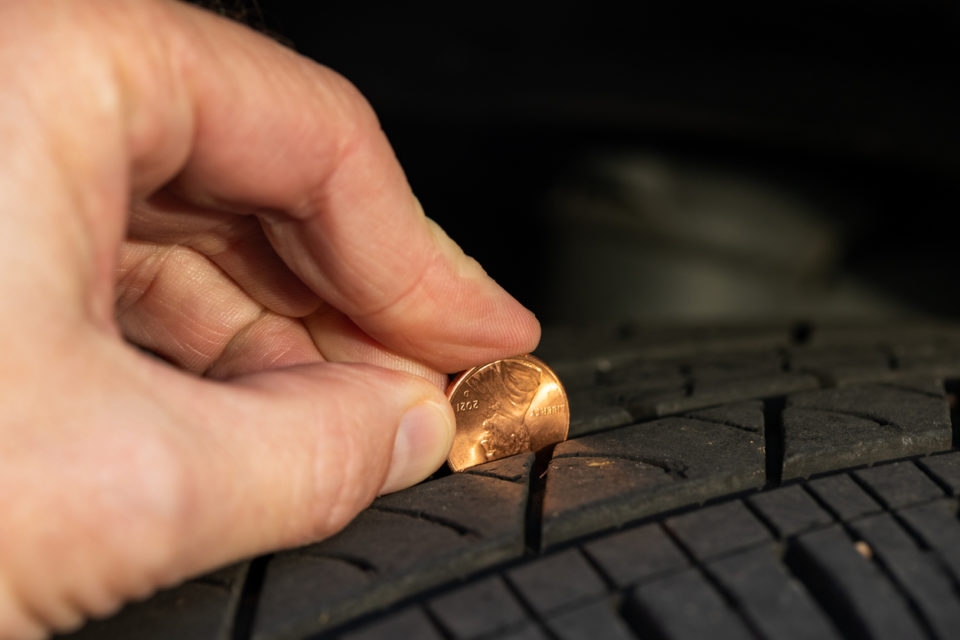
Having tires on your car with low thread can be very dangerous. Not only are you much more susceptible to a blowout, but when the road is wet, you are more prone to hydroplaning. There are certain tips and tricks, however, that can help you check your tire tread. Cars.com reminds you to take these precautionary steps in order keep yourself, your passengers, and others safe.
Finger Check
New tires almost always have a tire tread of around 10/32 to 11/32 of an inch. Over the course of the tire’s life, as the tread wears, that number will gradually sink to 2/32. When it reaches that point, your tread is officially worn out. To measure if this has happened, you can feel for it by finding your built-in wear bar. A wear-bar is typically built into a tire and runs along the thread at a height of 2/32 of an inch. When you run your fingers on the sides of your threads, you will likely find a small hump – this is your wear bar. If it is even with your tread, you should have your tires checked to see if you need replacements.
Penny Test
This common test can be done with either a penny or a quarter. If you choose a penny, insert the coin into a groove of your car’s tire. If you can see Abraham Lincoln’s entire head, then your thread is too low. If you choose to use a quarter for this test it will be a little different. Lincoln’s head is 2/32 of an inch away from the coin’s edge whereas George Washington’s is 4/32 of an inch, so seeing all of Washington’s head means you may have a more thread, but you are still wearing thin.
Check Three Grooves
Anytime you are checking tread depth, be sure to check it in three grooves: the one closest to you, the one in the middle, and the one farthest from you. Differences in those depths can indicate issues with your air pressure or alignment. Less tread depth in the center will tell you that the tire has been overinflated. If the tread depths vary, deeper in the nearest and less in the farthest, it indicates a suspension alignment issue with camber.
Feathering And Cupping
While you check for thread, also check for feathering and cupping. To check for feathering, run your hand across tread back and forth from near side to far side. If you notice the edge catching your hand in one direction but not the other that could mean you have feathering and, potentially, a problem with your toe adjustment – either toe-in or toe-out. Toe-in is a steering alignment issue that indicates your front tires are both pointing inward instead of parallel to each other. Toe-out is the opposite. To check for cupping, or low spots on the tire, flatten your hand and run it back and forth along the top of the tread (right to left and back) for about a quarter of the circumference of the tire. This will tell you whether the tire is out of balance or that there’s an alignment or suspension problem.
You might also like: Take The Road By Storm With The F-150 Lightning
Tire Service At Thomasville Ford
If you think you might have an issue with your tires, or you simply want to come in to have them checked, visit our service team at Thomasville Ford. We have the experience and expertise to make necessary recommendations for your tires, and we can help you find a new set for your car if necessary. We look forward to serving you.
Disclaimer: The stock image is being used for illustrative purposes only, and it is not a direct representation of the business, recipe, or activity listed. Any person depicted in the stock image is a model.
